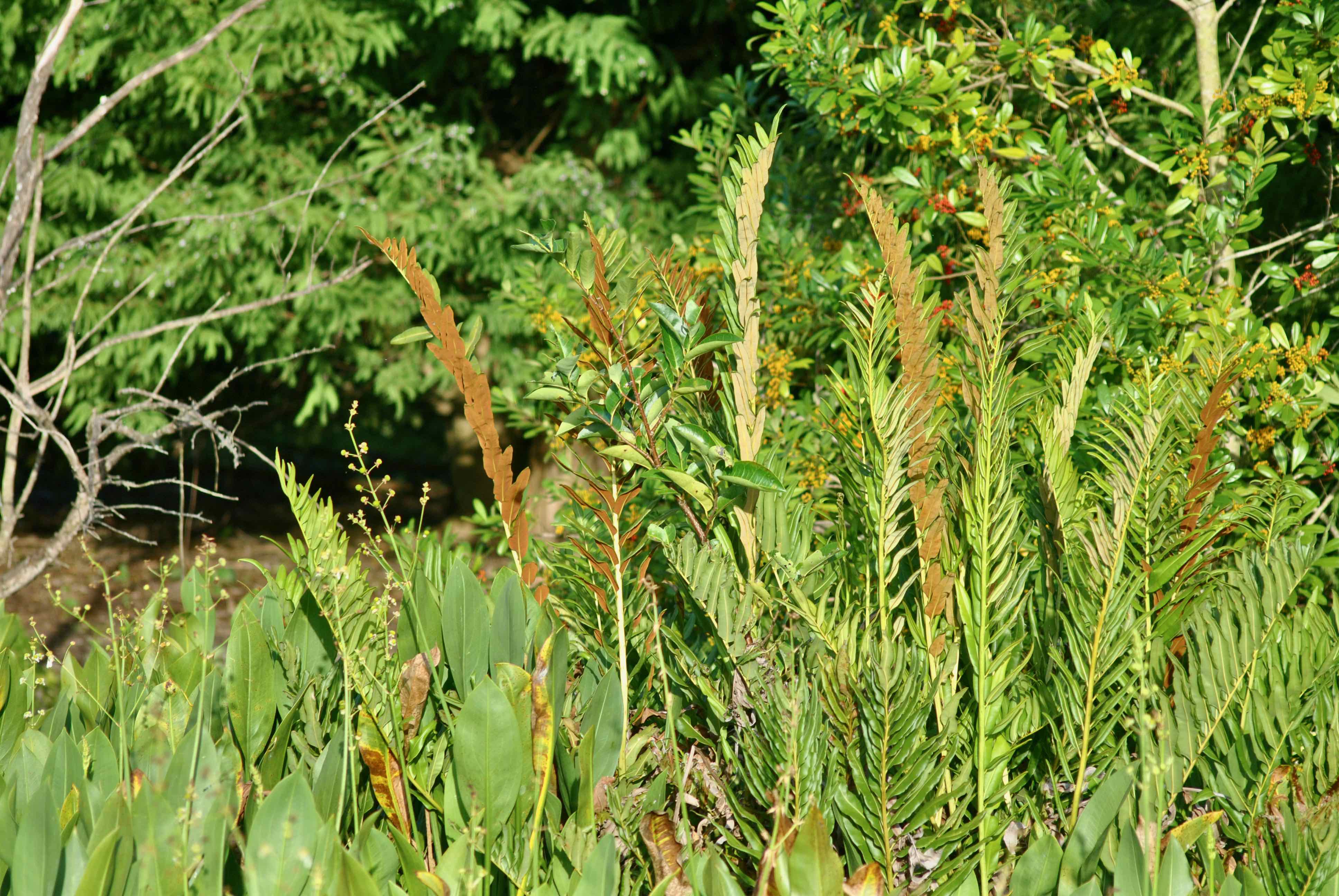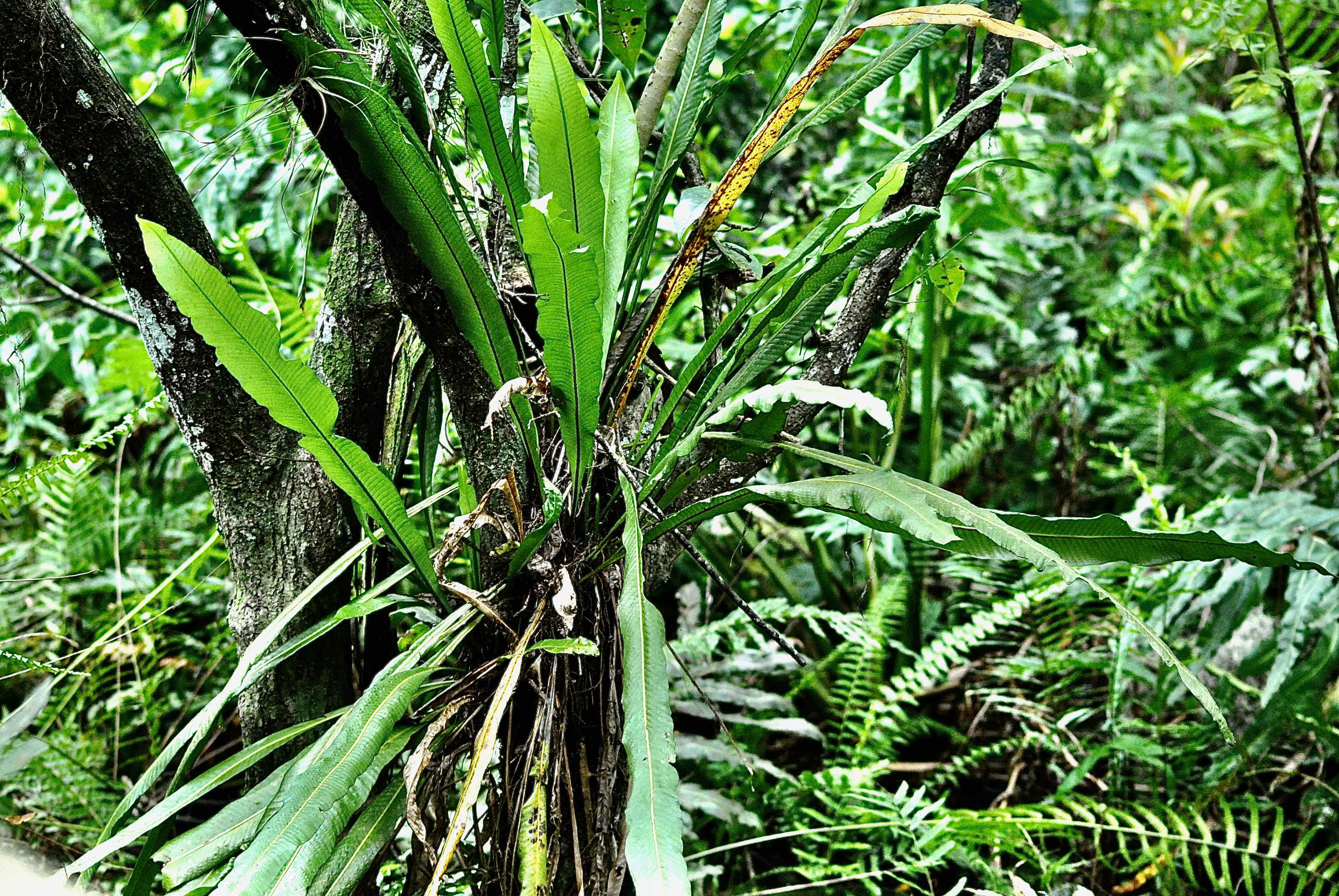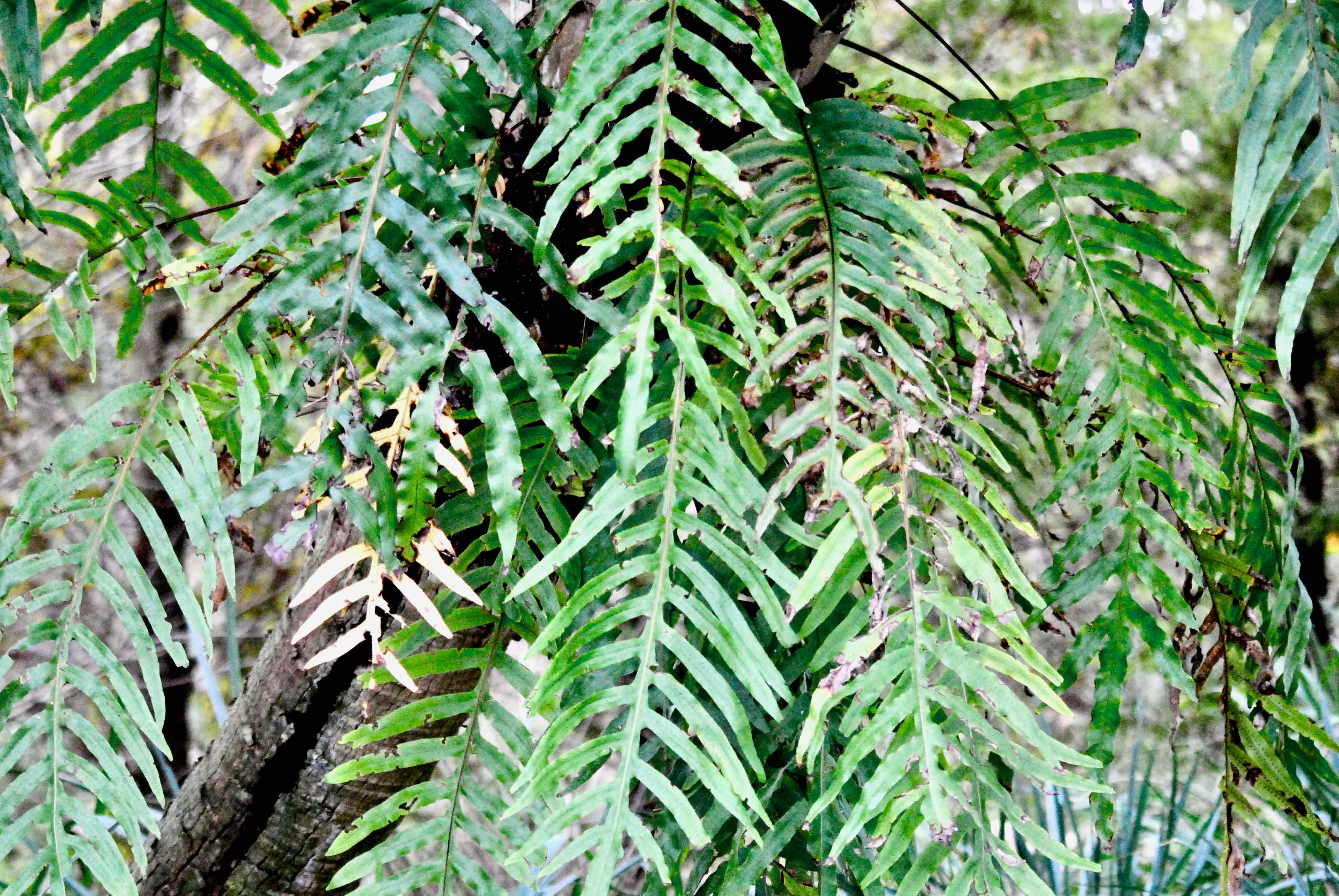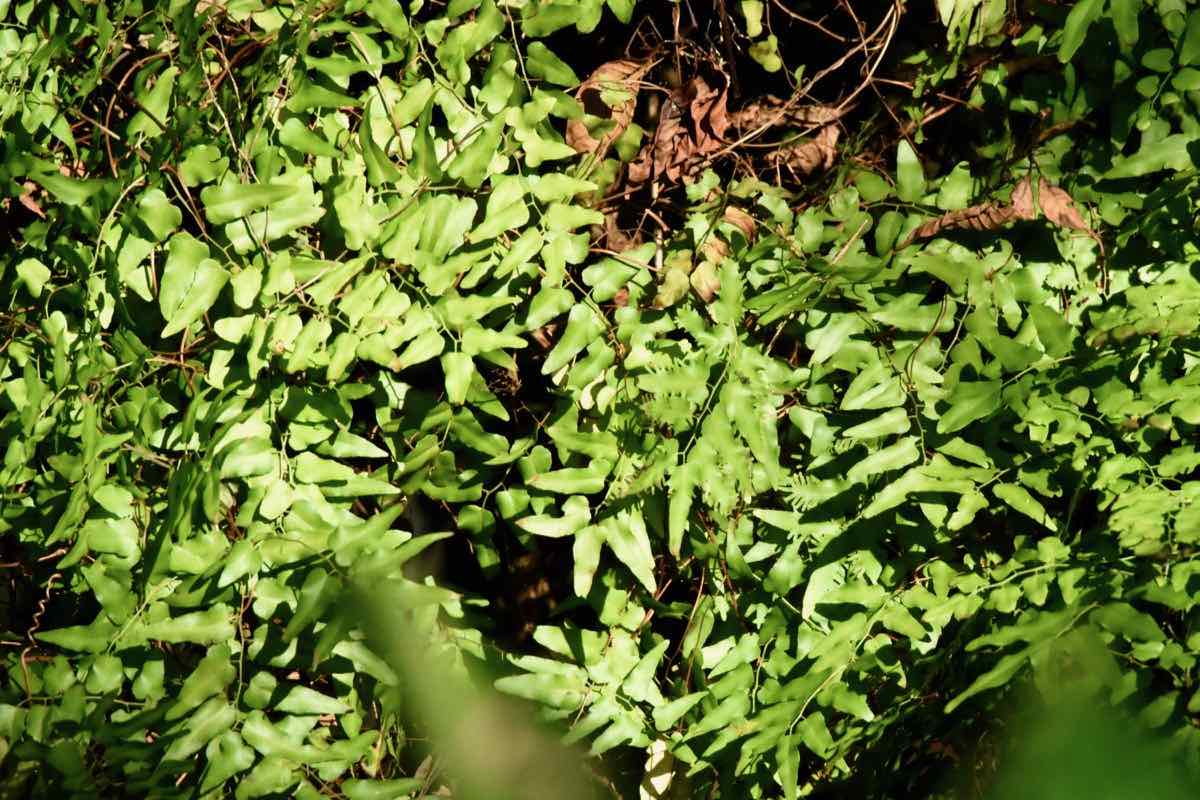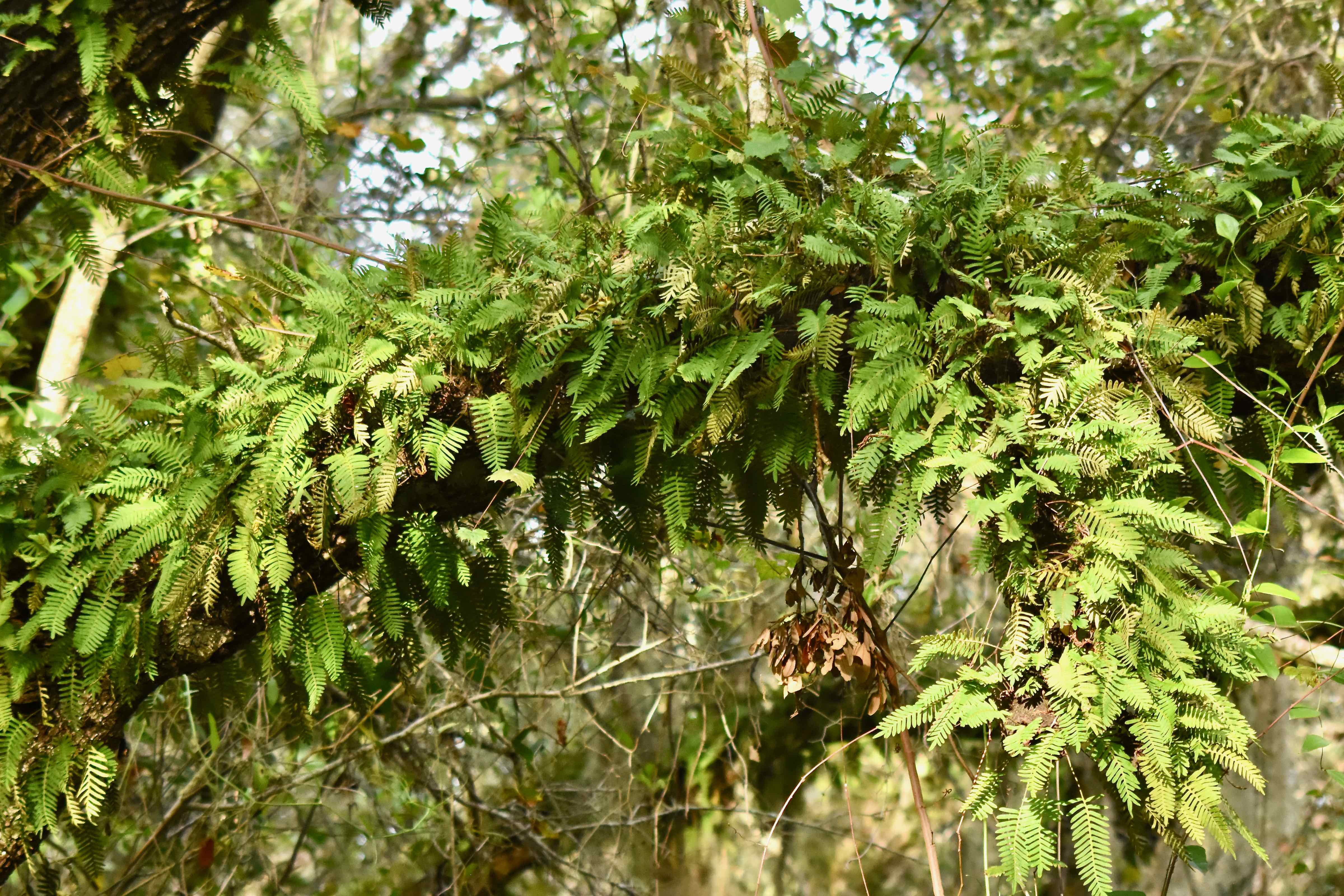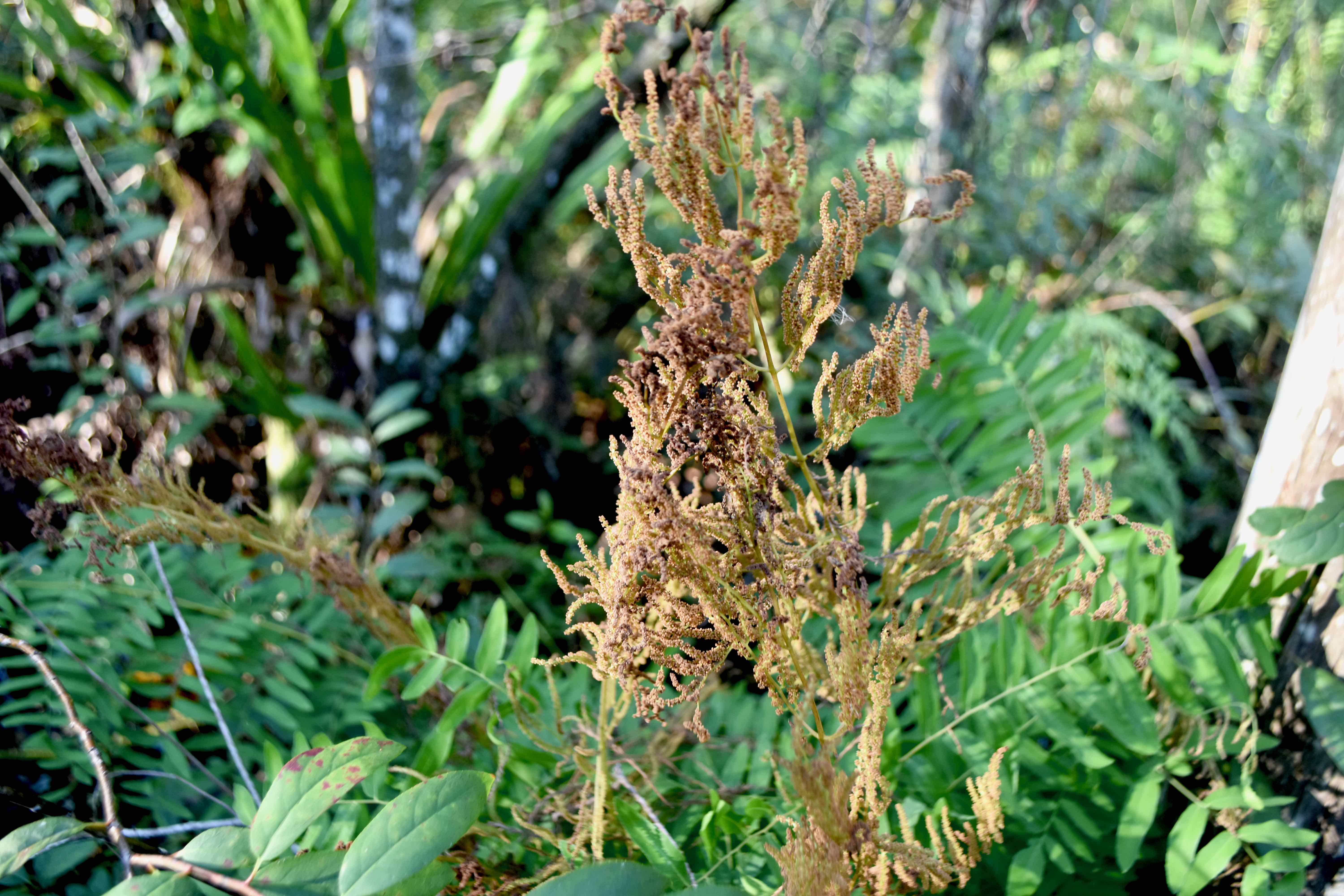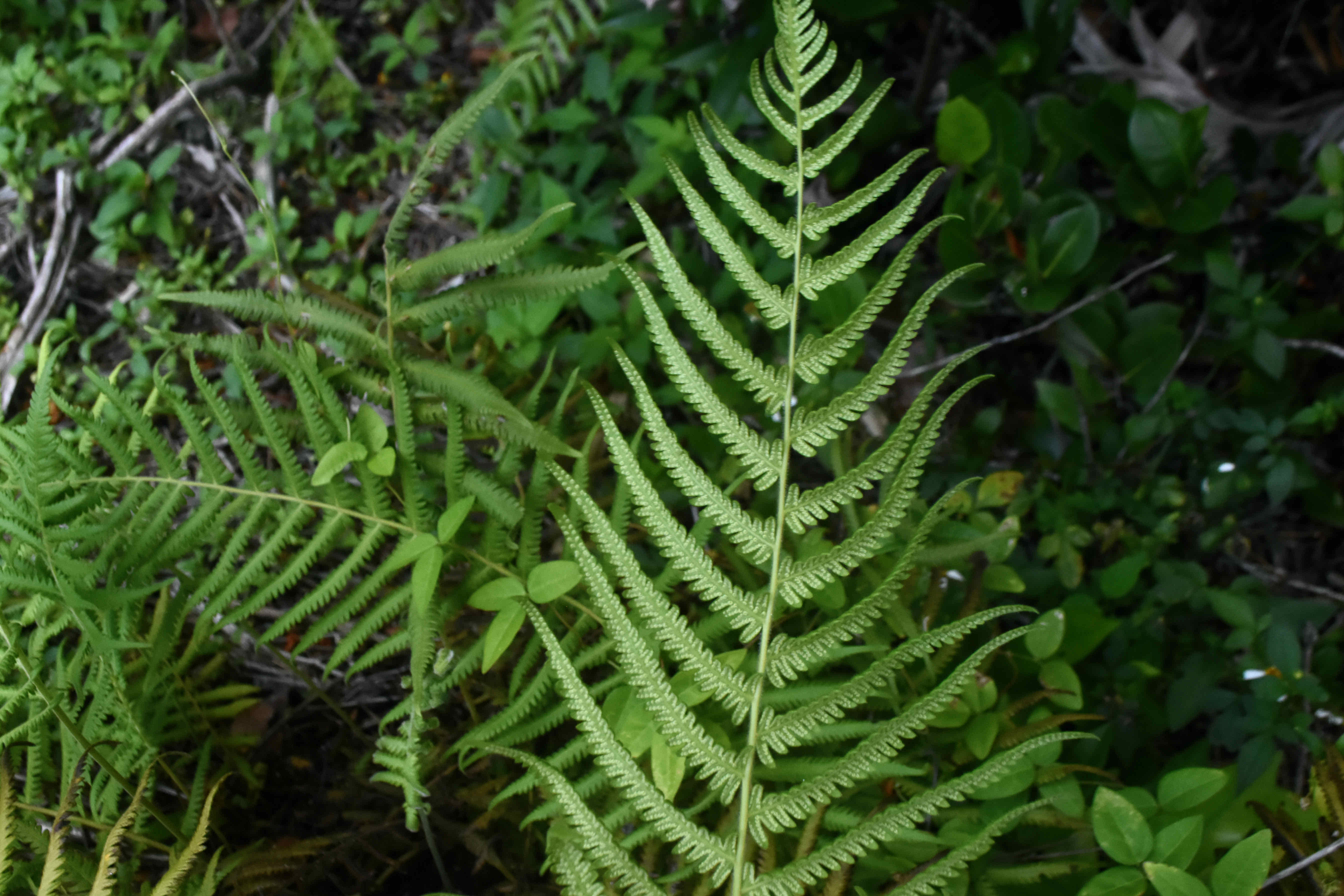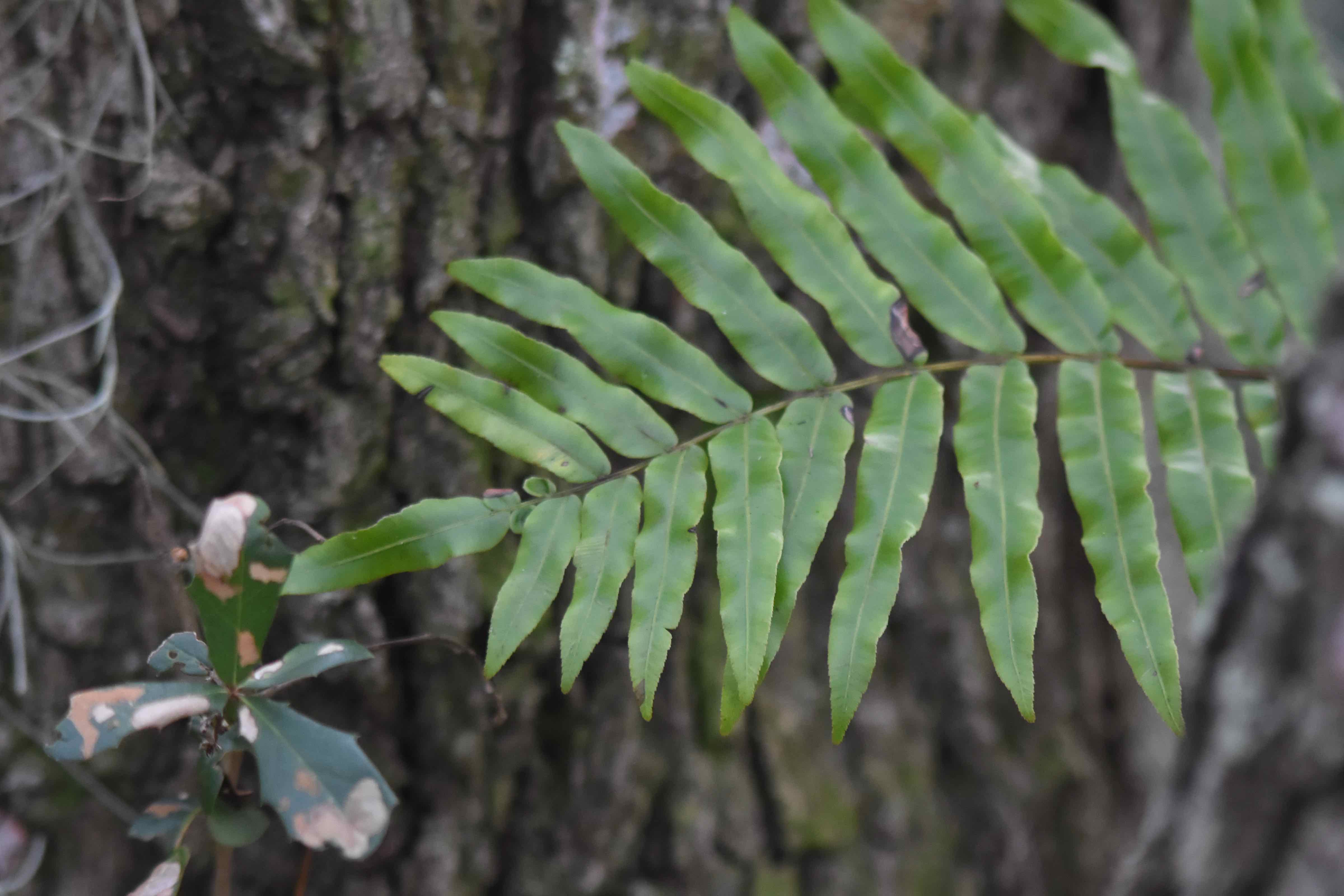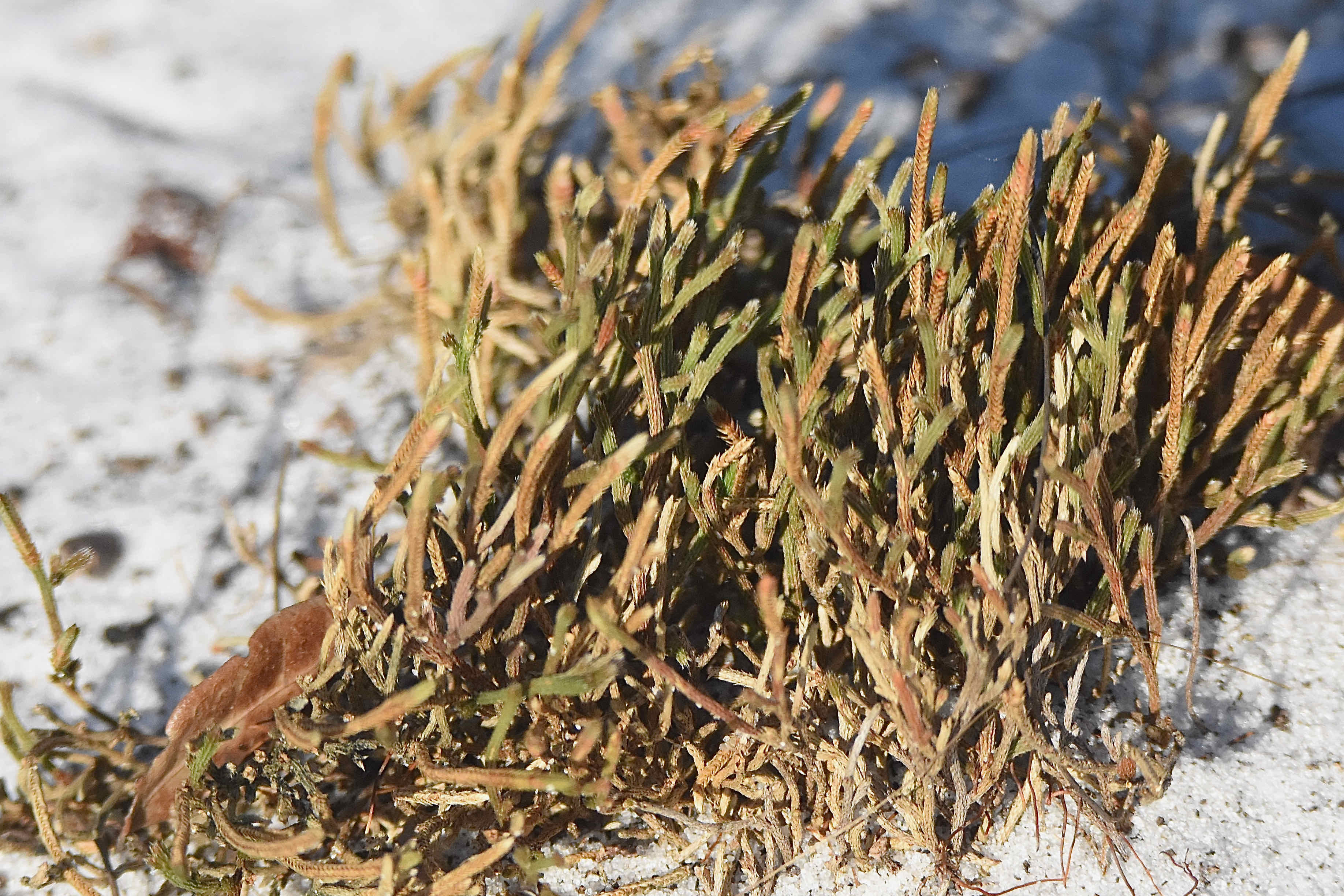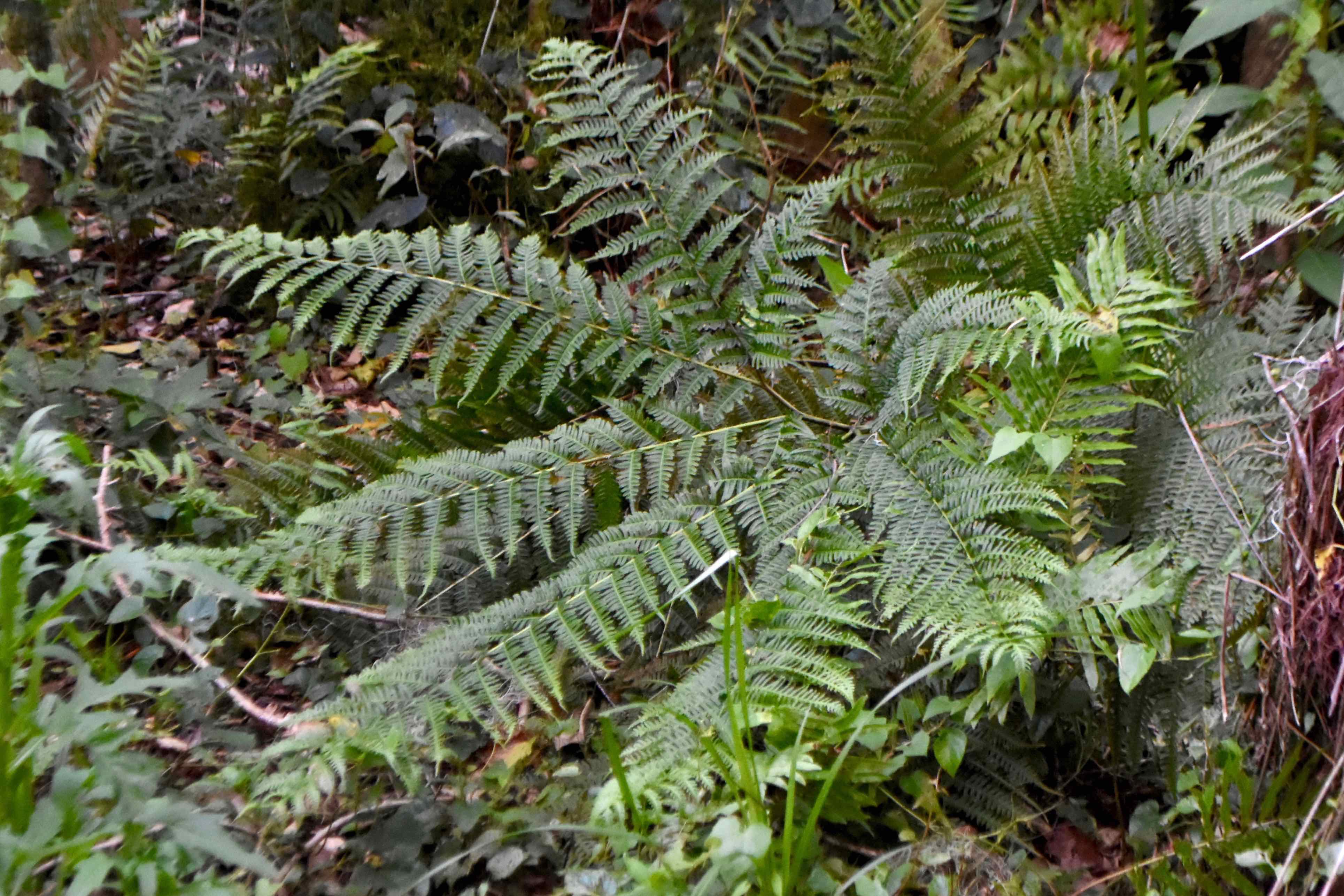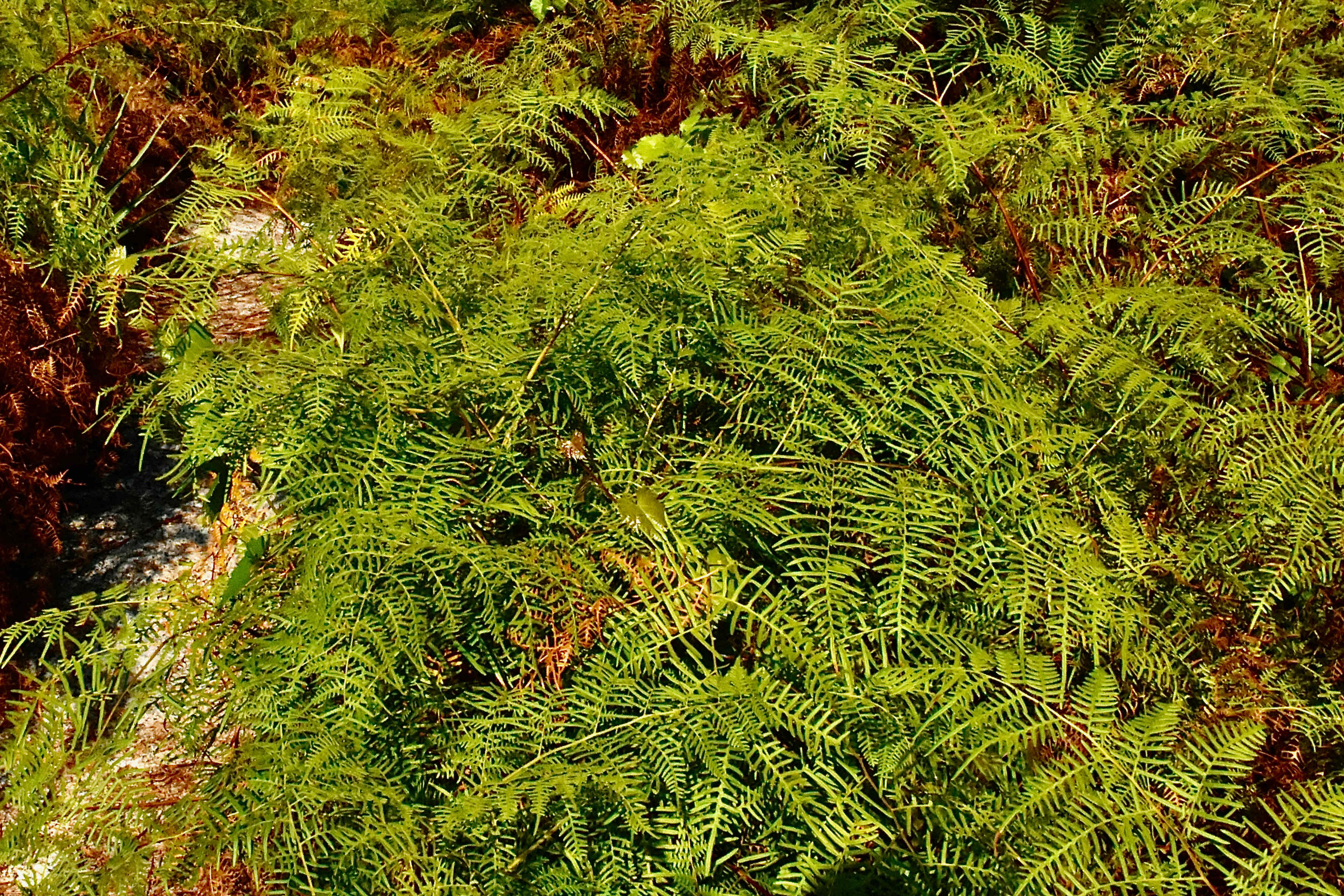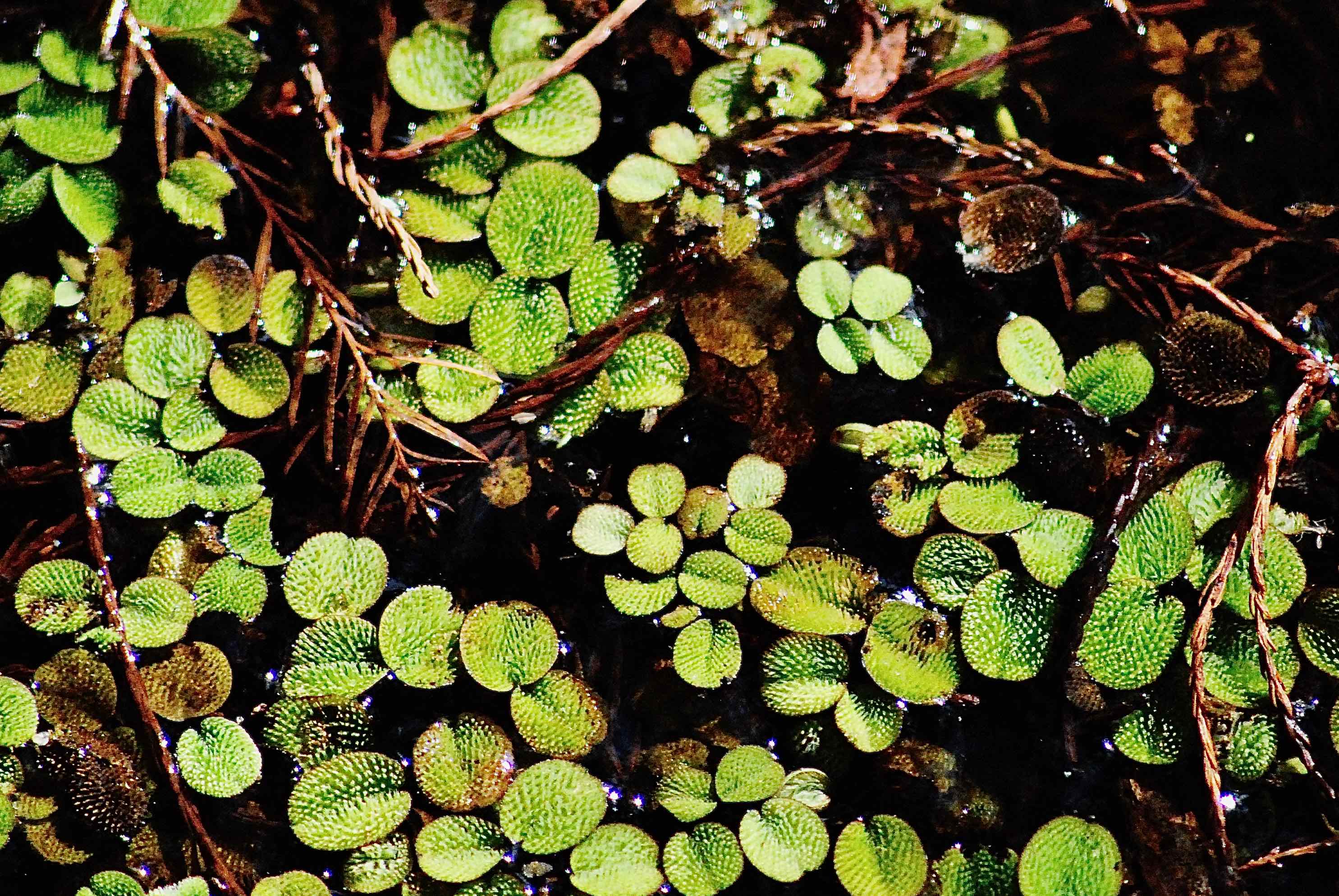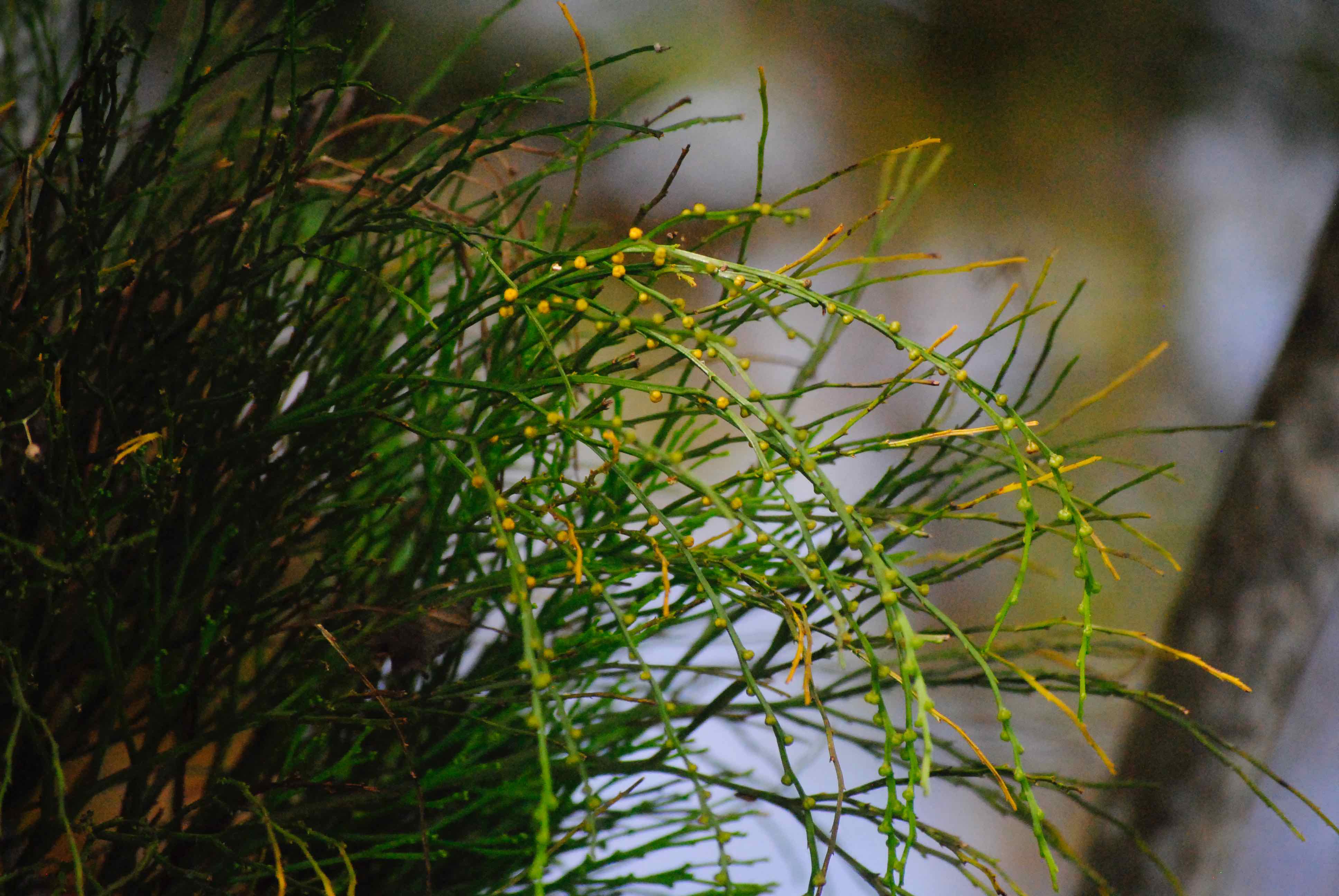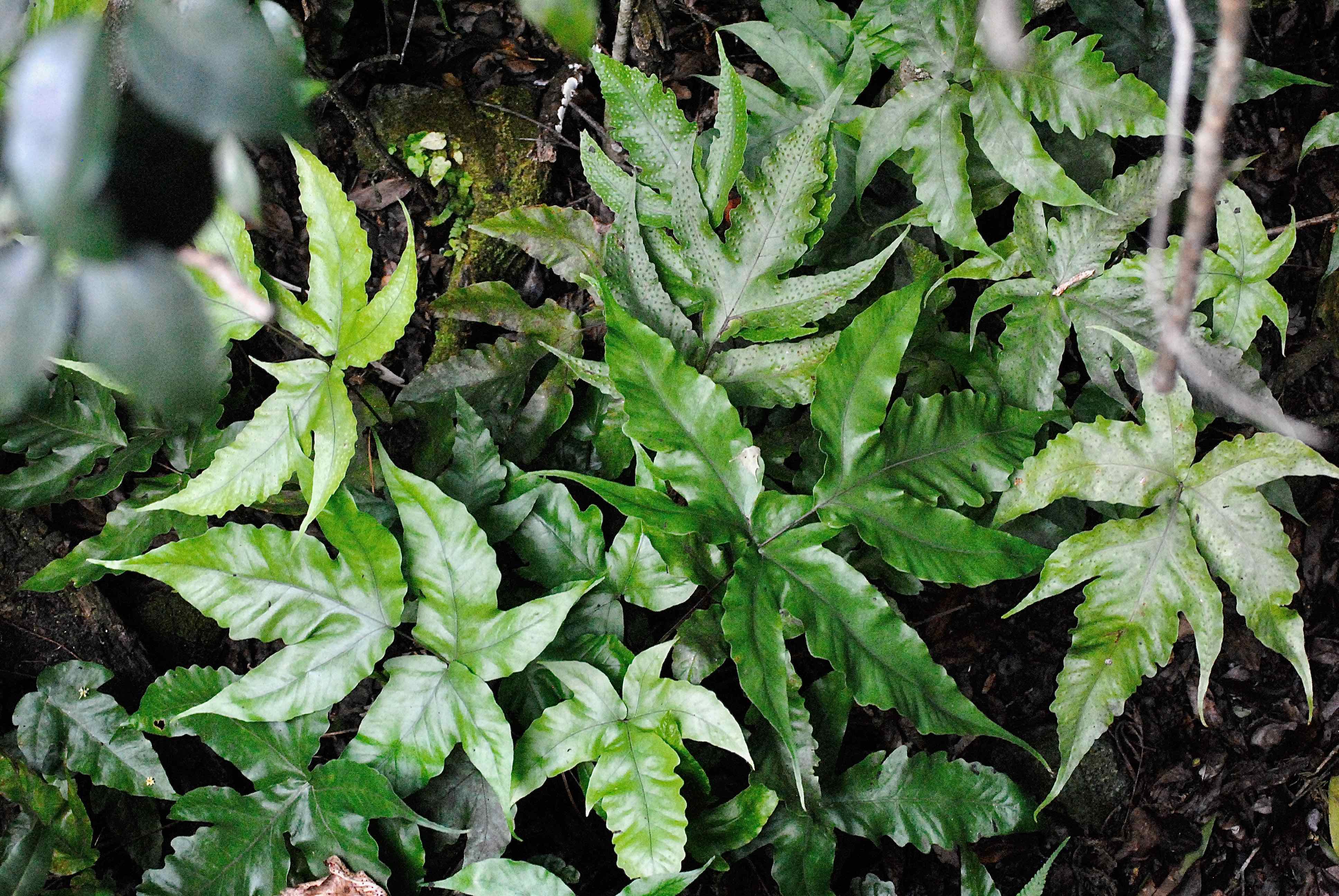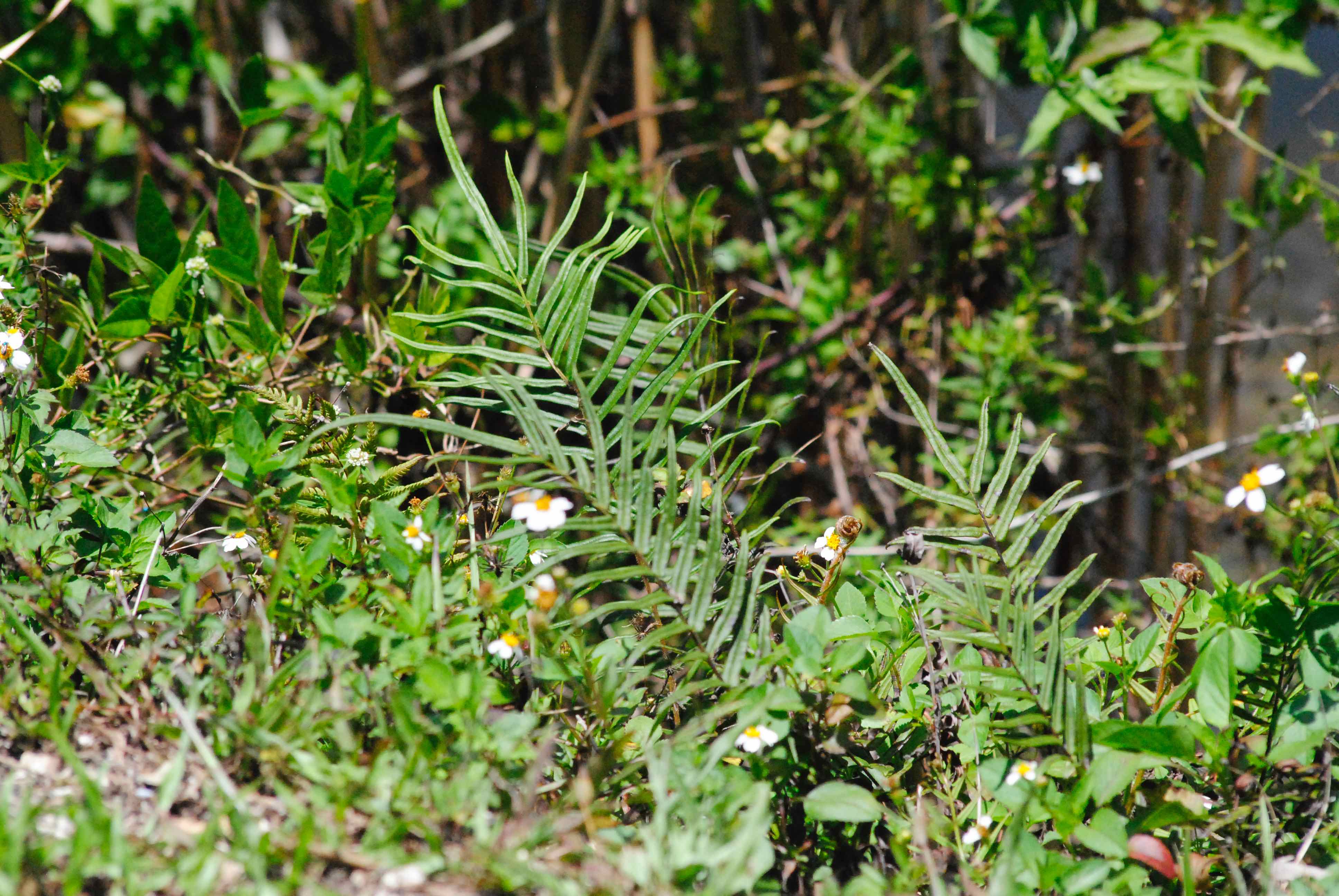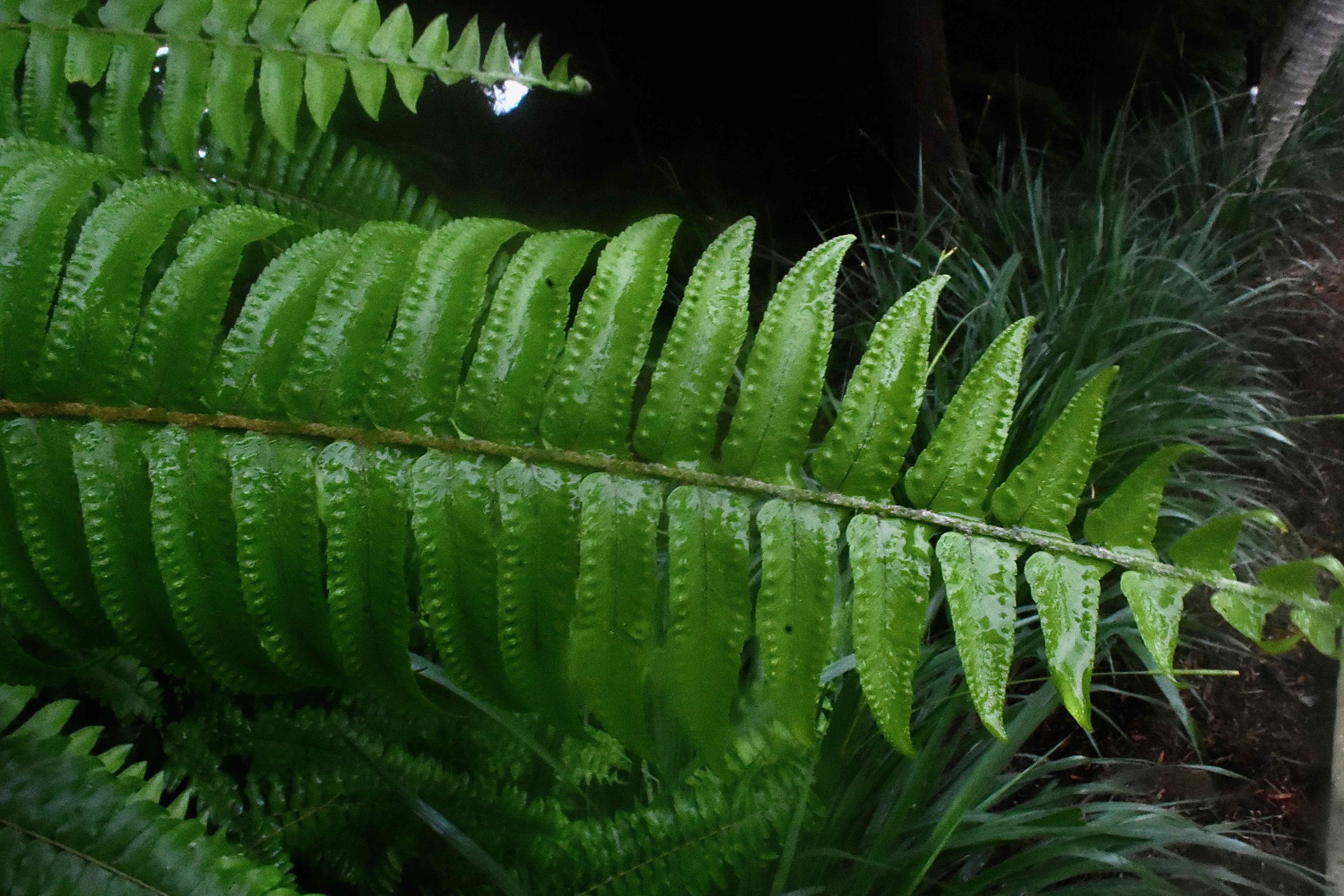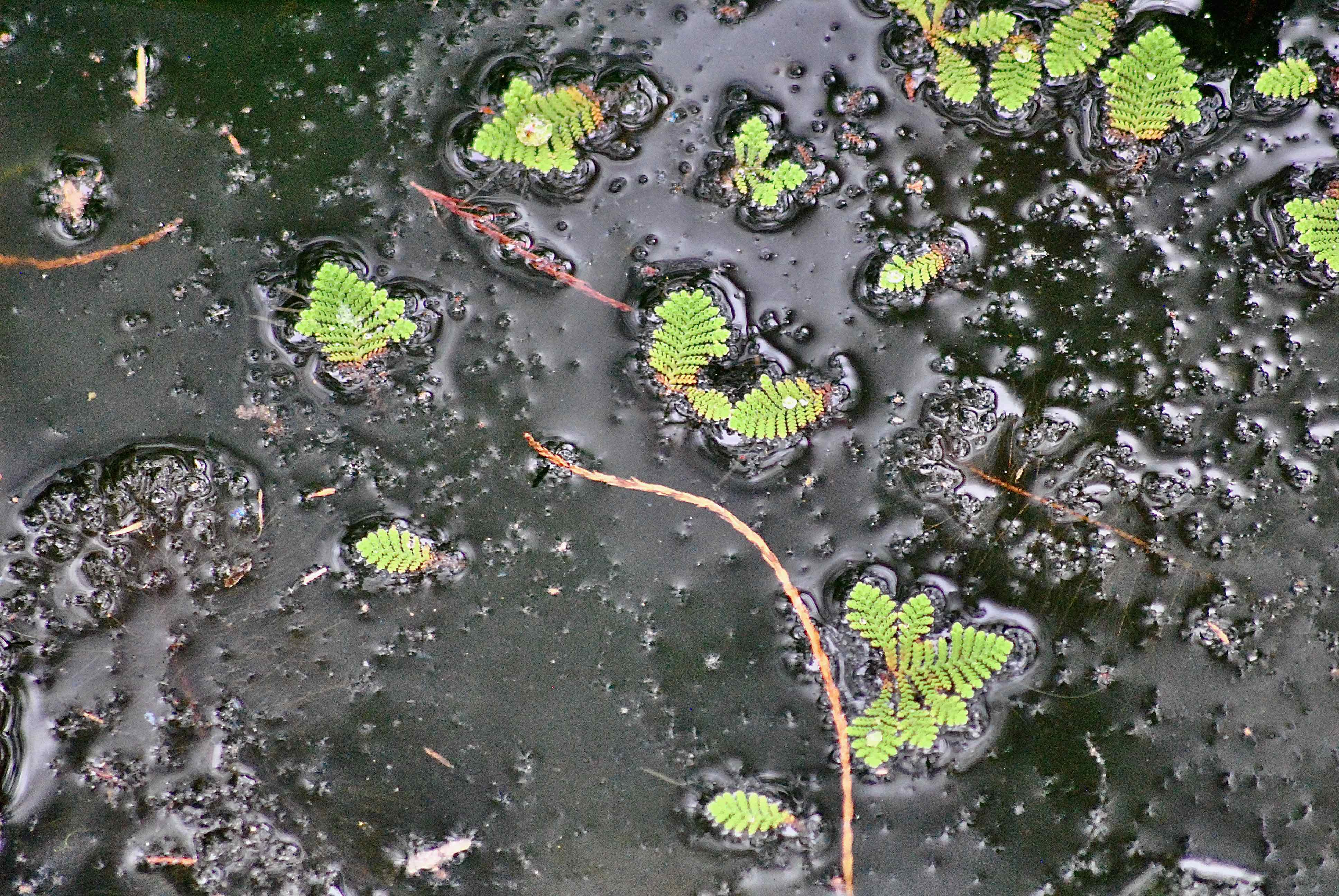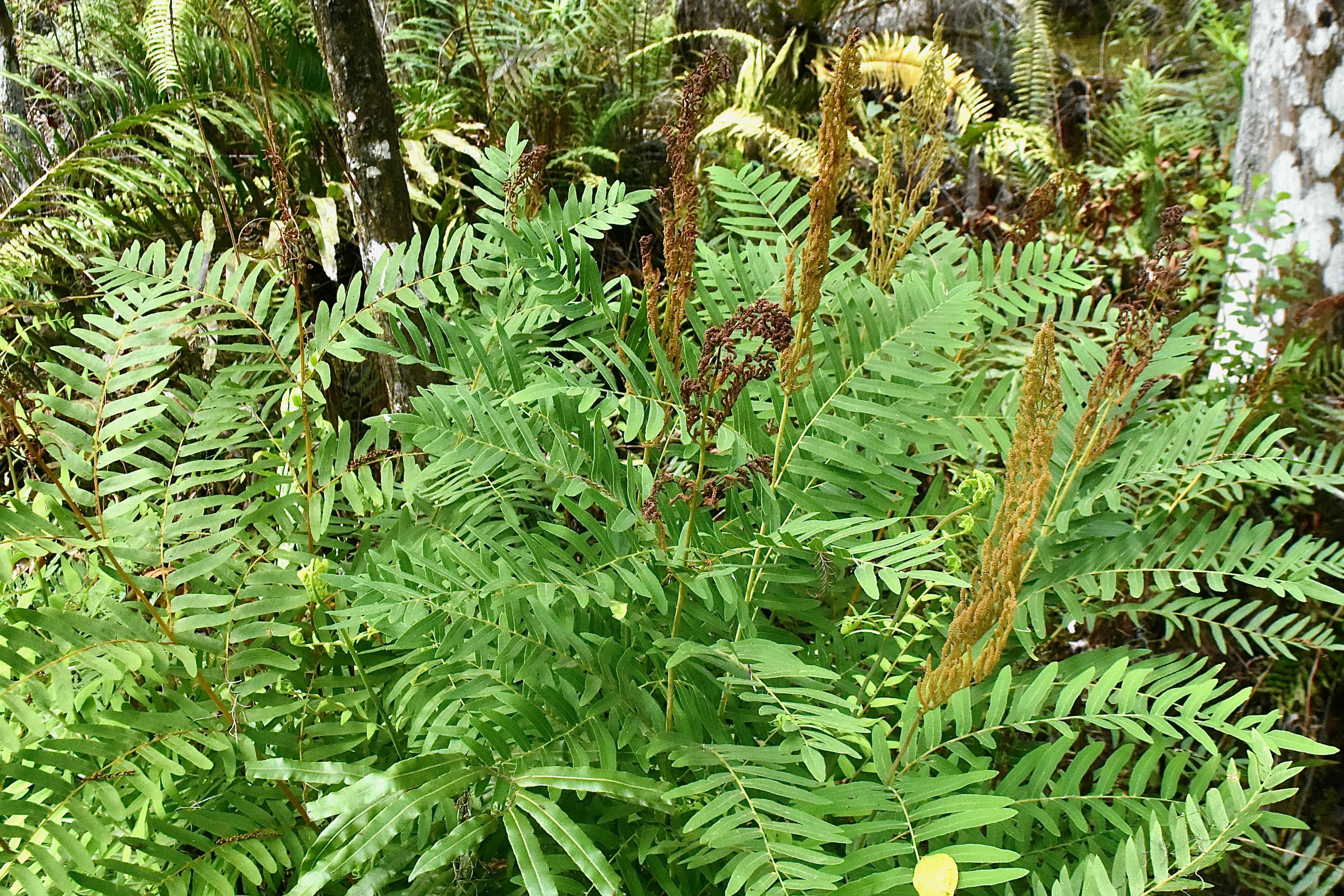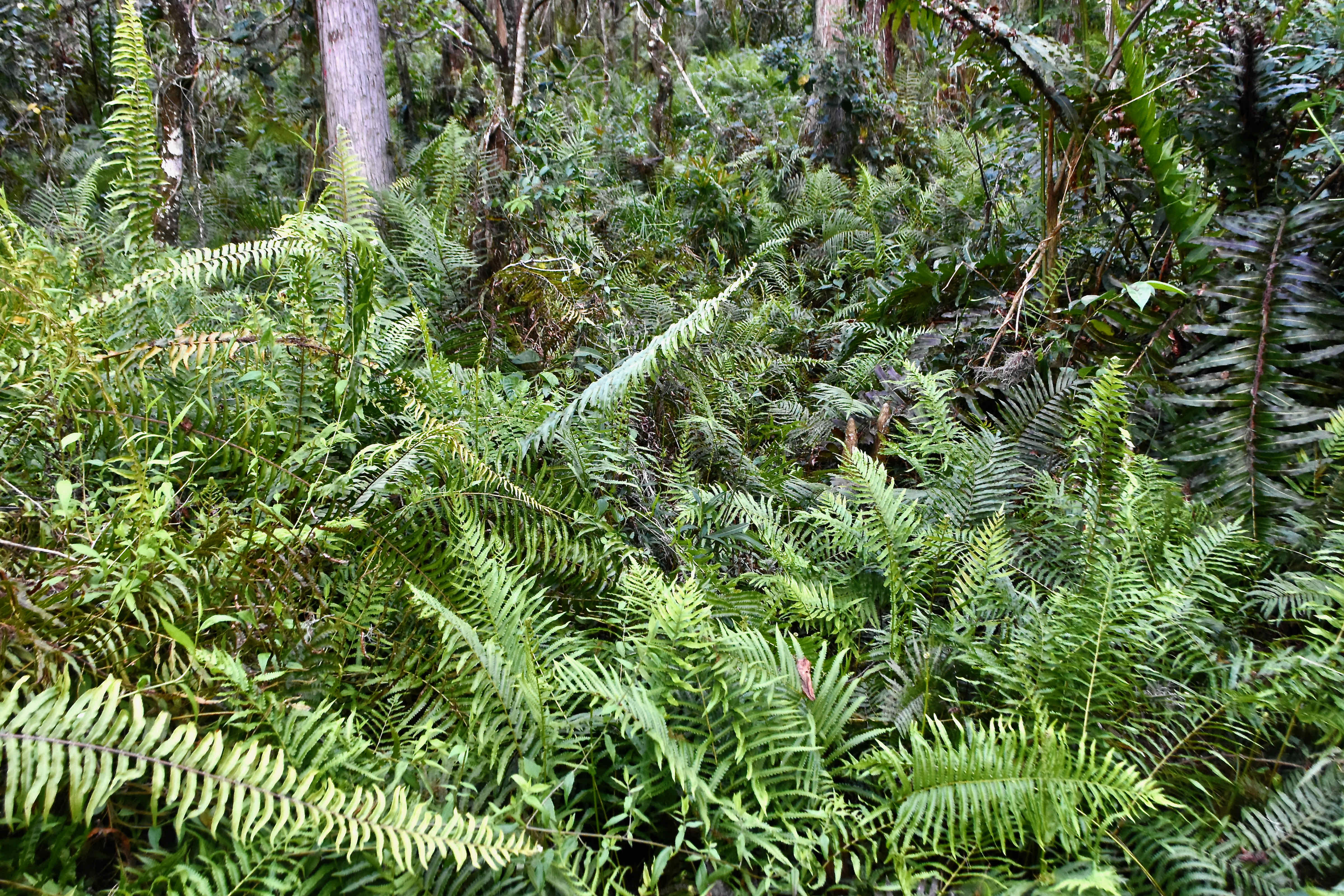
Swamps fern and giant leather fern growing in the cypress swamp at Loxahatchee National Wildlife Refuge.
Stepping into a fern-dominated forest is like stepping back a 100 million years into prehistory. You can almost imagine somewhere in the background a triceritops munching away, with one eye on the alert for t-rex. These plants are that old.
Ferns are among the oldest and most abundant plants on the planet, dating back more than 360 million years to the Devonian Era and the rise of the first plants on land. Some species have been around unchanged for 180 million years.
There are nearly 11,000 species of ferns worldwide, living in just about every climate, every habitat except for the most extreme. There are more than 160 species in Florida, of which the Institute for Regional Conservation lists 124 as present in South Florida.
There are ferns that live in water, on land and in the air — epiphytes. Some grow like trees, some like vines. They can be extremely useful or extremely destructive. One, old world climbing fern, is among the biggest environmental rogues in the wilds of South Florida. Another, bracken fern, has been both pest and providence to us humans. And they appeal to our sense of aesthetics, occupying our gardens, our offices and our homes.
So what makes a fern a fern? First, like trees and flowers, they are vascular plants, meaning they have tissue that transports water and nutrients to their various parts the way animals have blood vessels. Secondly, like trees and flowers, ferns reproduce sexually, but unlike trees and flowers, by spores rather than by seeds. Structures on the plants called sporangia produce the spores. Clusters of sporangia are called sori, usually seen on the backs of leaves as rows of small dots. Their shape and how they're arranged on the plant is one of the keys to identifying specific fern species.
A seed is essentially an embryonic plant wrapped in a protective outer coating. A spore, on the other hand, is a single cell smaller than the thickness of a hair. Ferns produce millions of them, and if one finds a spot with the right conditions, which includes the presence of at least some water, it grows into what's called a gametophyte plant that will have male or female structures, or both. Sperm from the male structure will swim its way to the female structure of the same gametophyte or more likely to that of a different gametophyte, and attempt to fertilize the egg within. If all goes well, a mature, spore-producing fern develops.
Like flowering plants, ferns have stems, leaves and root, but some of the language used to describe ferns is a little different. Some basics: leaves are called fronds. They can be simple — undivided like strap ferns — or compound — divided, like royal ferns. The divisions, or leaflets, are called pinna. On some species, the pinna are further divided — that's called bipinnate and the divisions called pinnules. If the pinnules can be divided again, the fern is tri-pinnate. Newly emerging fronds are called fiddleheads, because they resemble the heads of a violin.
The fronds on many species can be divided by function. Some serve to conduct photosynthesis, the process of converting sunlight into energy for the plant. These are trophophyll fronds. Others hold the sporangia, and are called sporophyll fronds.
So how important are ferns in the cosmic scheme of things? Ferns played a critical role in oxygenating earth's atmosphere and creating a planet habitable for life forms like us. They provide micro habitats for some animals, shelter and shade for others. Their fibrous roots filter ground water.
Their economic value, however, is minimal, though certain species have been used by us humans to brew beer and make glass and as food. There is their aesthetic value as house and garden plants, and we do benefit from their ecological contributions. Some species, such as royal fern, have been harvested from the wild for commercial use to the point where in places, the species has been threatened with extinction.
The central stem is called a rachis. All ferns have roots (no change in terminology here) and most have rhizomes, or underground stems.
One more note: The classifications of ferns and fern-like plants have been rather fluid over the centuries based on the state of scientific knowledge at the time. The ability to study the characteristics of these plants at a molecular level (molecular phylogenetics) has shuffled these classifications substantially in recent years.
There is a group of plants that traditionally have been called fern allies. These are plants that are characteristic of ferns in some ways, different in others. In other words, they seem to be closely related to ferns. Recent studies on these plants have found that some fern allies, like wisk ferns are actually true ferns, and others, like the spikemosses, not closely related at all. Spikemosses, in fact, were so different molecularly from any other types of plants that they were put into their own class. Polypodiopsida
All of this might seem like inside baseball (or inside botany) but it speaks to the evolving state of science, about what we know about things that inhabit our planet and what we don't know.

